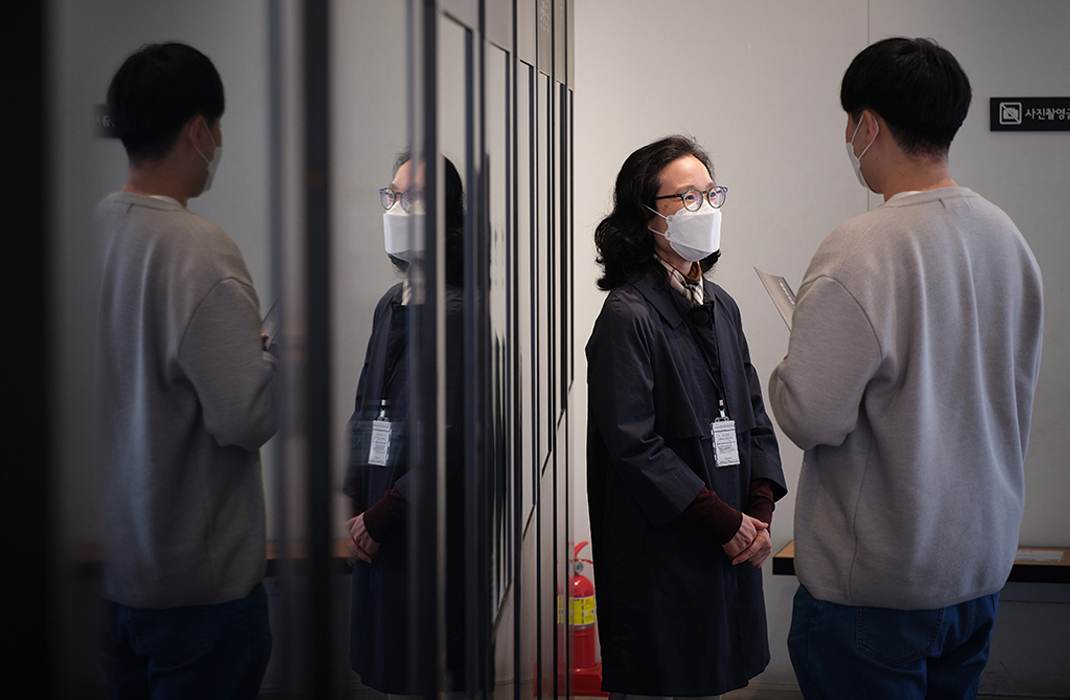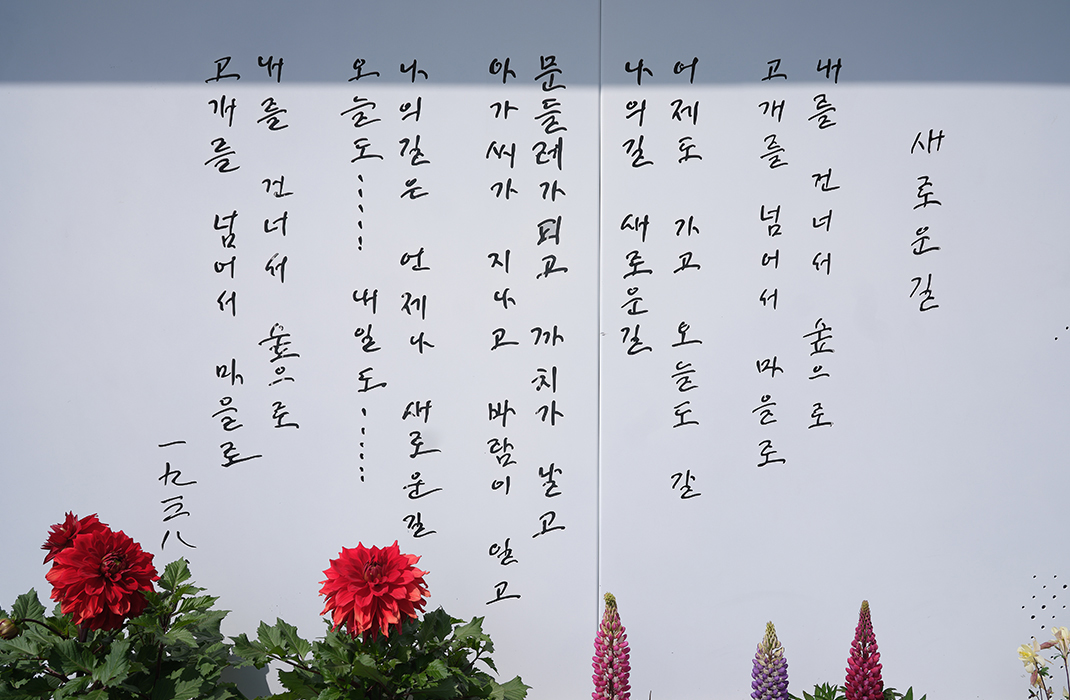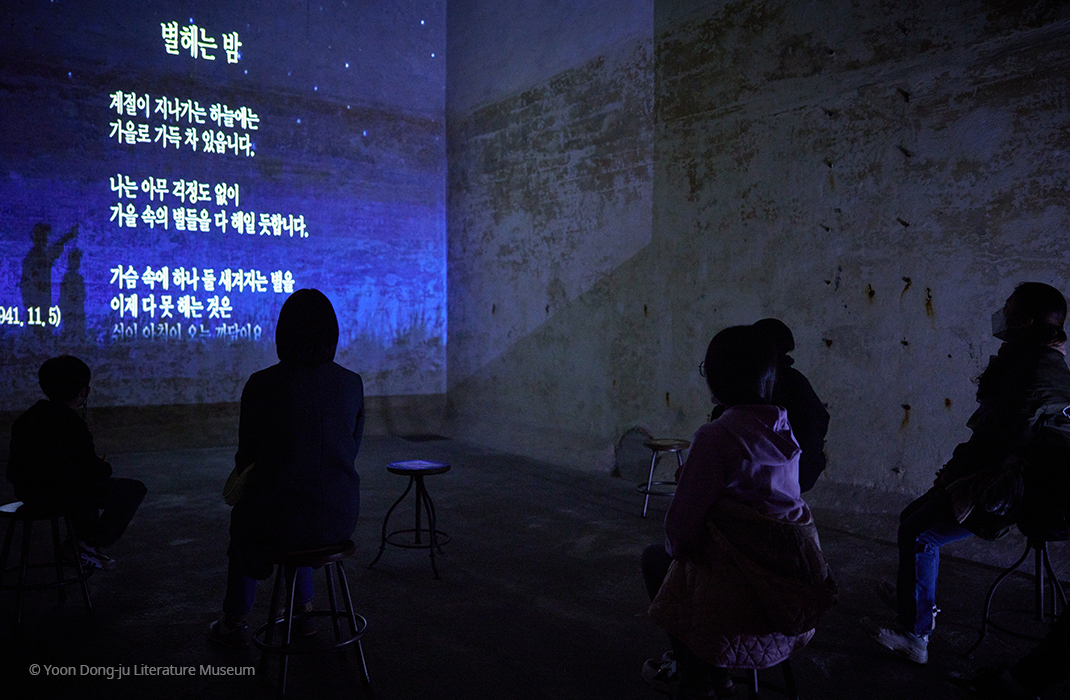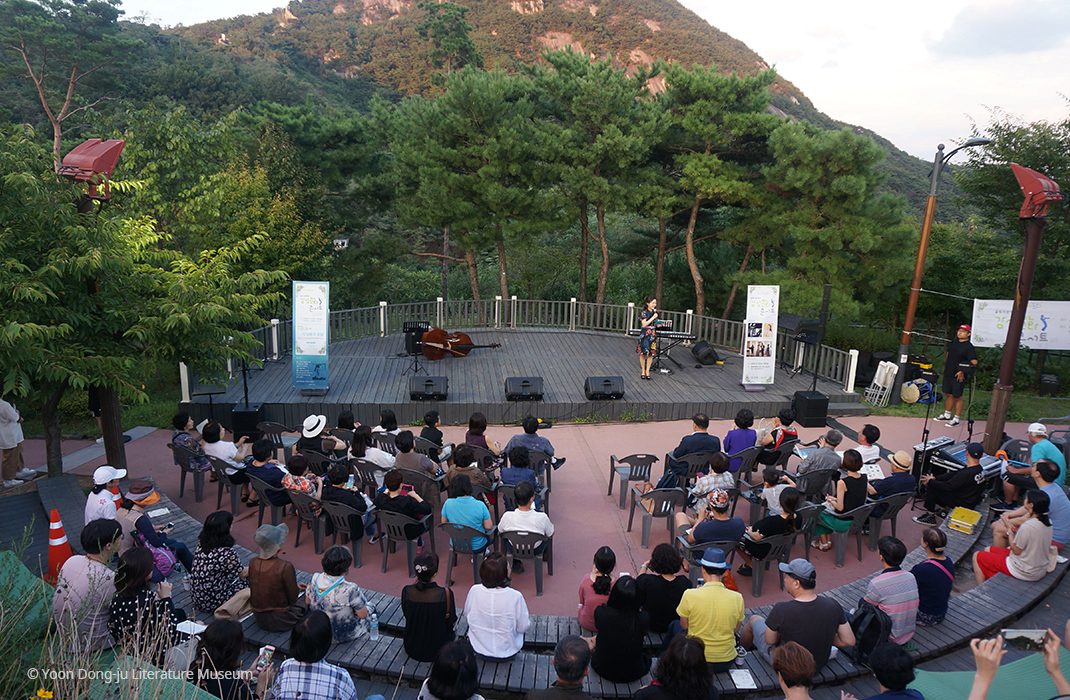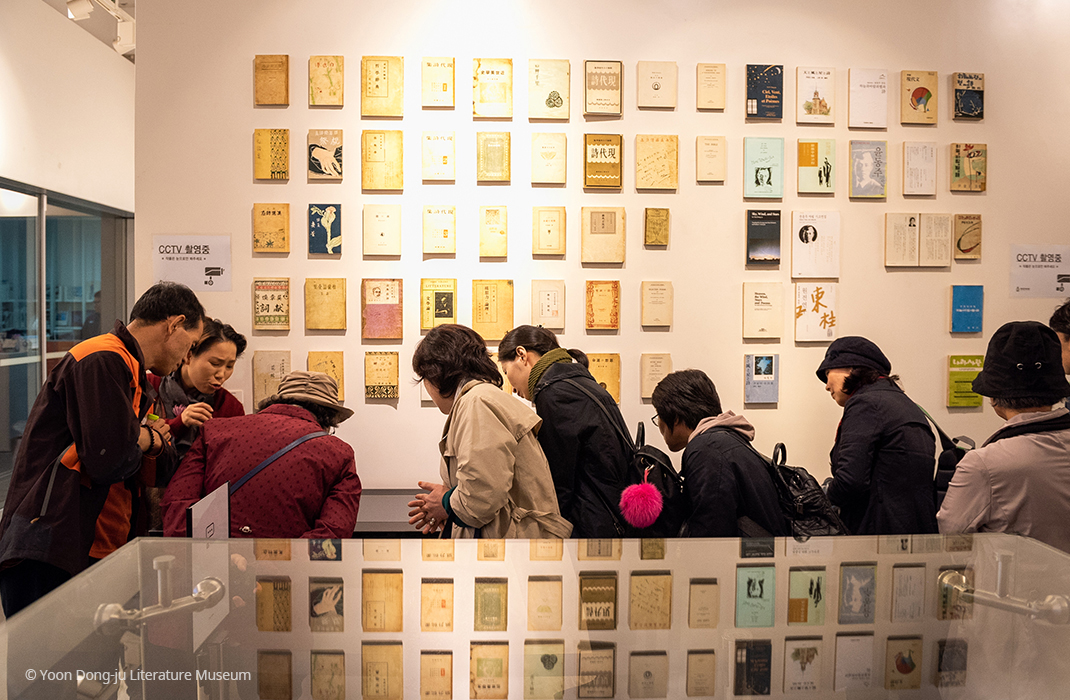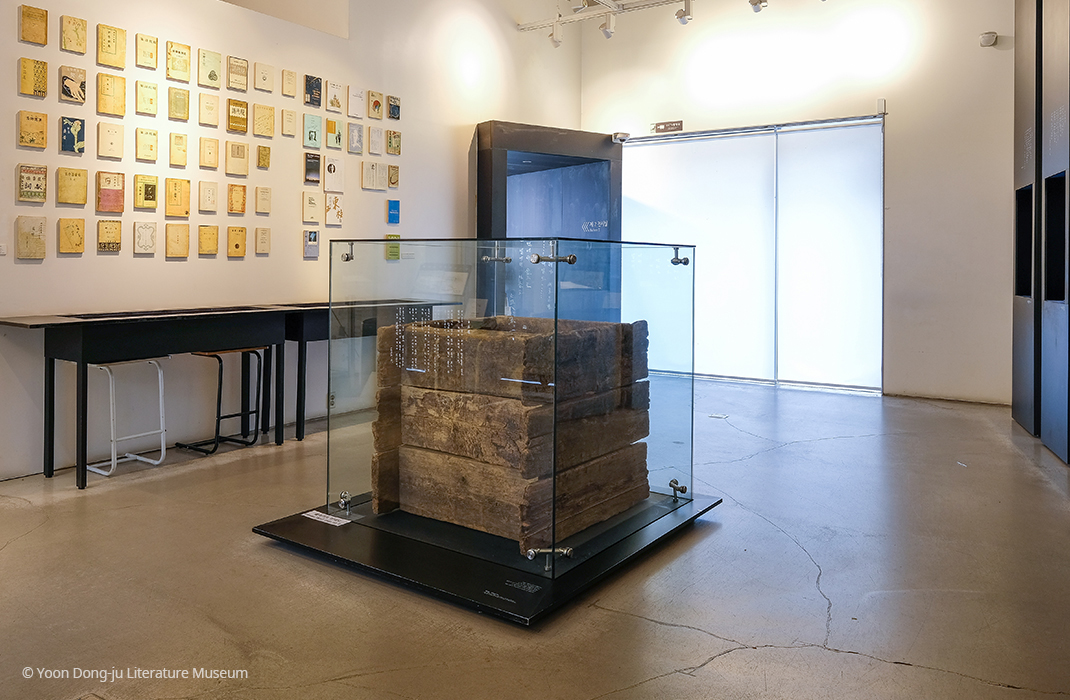A Pumping Station
with Spirit
A Water Pumping Station-turned-Literature Museum
Is a Work of Poetic Inspiration
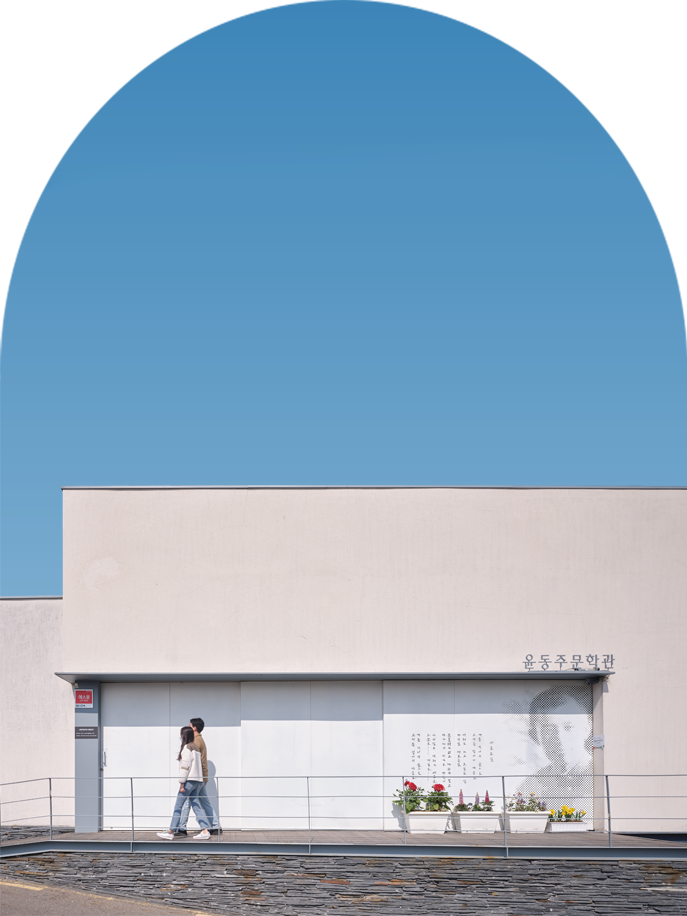
WRITTEN BY
Yu Pureum
Photographed by
Kim Byounggu
One of Korea’s most beloved poets is Yoon Dong-ju. Inwangsan Mountain, which is located in Seoul’s Cheongun-dong neighborhood, is where Yoon used to go to ponder his art. An old water pumping station located on the foot of the mountain has been converted into a museum to commemorate Yoon and his poetry.
How the Yoon Dong-ju
Literature Museum Came to Be
It wasn’t easy to supply water to high elevation areas when technology was less developed than it is today. That is why pumping stations were created. These stations pump tap water into water tanks, where pressure is then used to supply the water to high elevation areas. The Cheongun Pumping Station, where the Yoon Dong-ju Literature Museum now sits, was built in 1974 to supply water to Cheongun Apartments, which were located on the flank of Inwangsan Mountain. However, the apartments were demolished in 2005, and the raison d’être for Cheongun Pumping Station disappeared.
Locals ceaselessly demanded that the Cheongun Pumping Station be demolished. While the demands did reach the ears of relevant government officials, those that visited the site of the station thought differently. They determined that a site with such a long history could not be simply destroyed given that it is difficult to recover with money what time has created. Luckily, the Yoon Dong-ju Poem Promotion Association, which had been holding meetings at the Cheongun Pumping Station, had the personal belongings of poet Yoon Dong-ju, and with those items in hand, they created the Yoon Dong-ju Literature Museum with the pumping station’s former buildings.
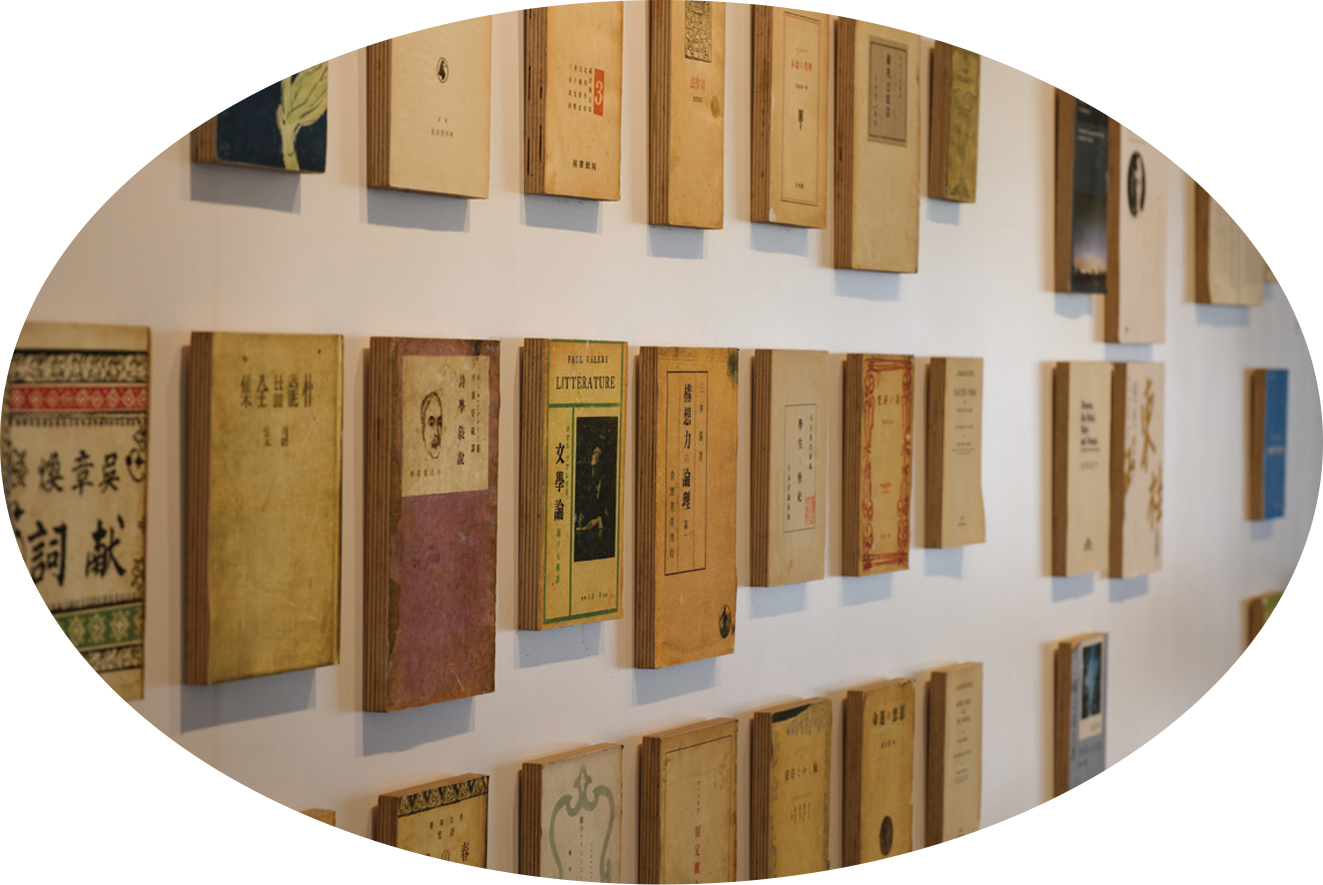
The covers of Yoon Dong-ju’s books are on display along the wall.
Melding Infrastructure and Poetry
The problem was that the museum’s founders had few things to exhibit in the museum. Yoon died at the early age of 27, and the only work of poetry that he had left behind during his short life was a poem collection called “Sky, Wind, Star and Poem.”
As a result, the museum’s founders created the new museum using the identity of the space and the world of literature Yoon inhabited. In short, using the unique characteristics of the “pumping station,” the museum’s curators chose to explore Yoon’s life as a poet and his place in the world of literature. In the process of remodeling the pumping station, the museum’s founders focused particularly on the poetic language of “water wells” that Yoon had used in his poetry. In short, the idea of a “well” was the link between Yoon and the pumping station.
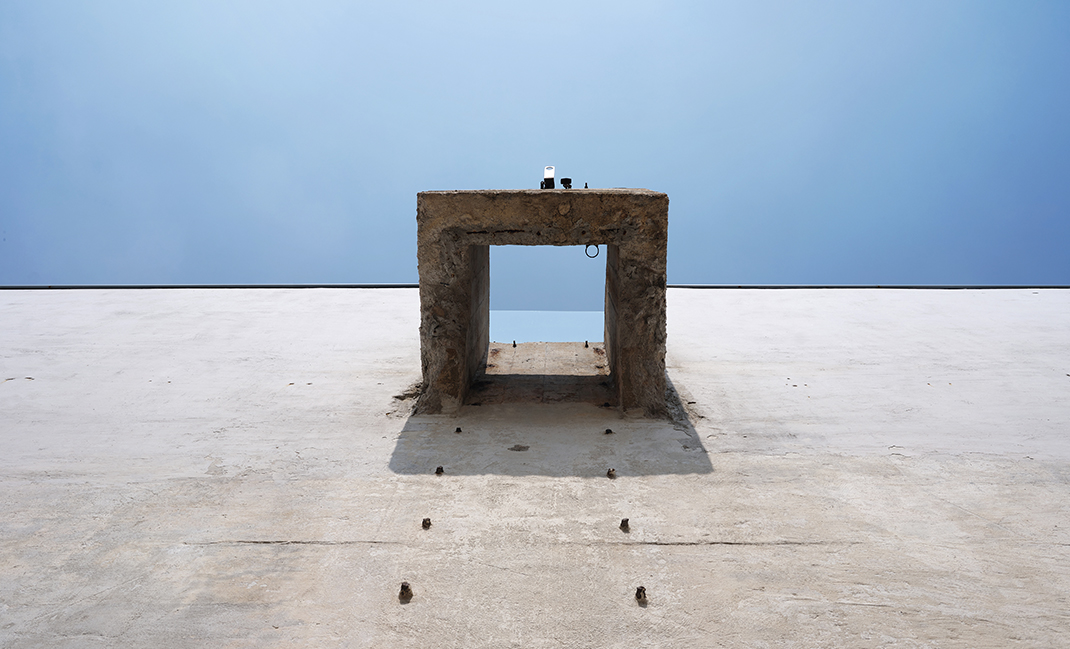
Wall of the ‘open well,’ a former water tank.
Of the two water tanks at the pumping station, the word “well” was added to one of them. This water tank had been preserved fairly well, and was called the “closed well.” Its dark and echoing chamber was turned into the solitary confinement cell that Yoon died in at Fukuoka Prison. The four-sided, closed-off space was reminiscent of a prison, while the stream of light streaming down from the window on the ceiling made the space even more dramatic. The museum’s curators placed a chair in the “closed well” and turned its walls into projector screens to show visitors small video clips of Yoon’s life.
The other water tank, however, was full of mold. The museum’s founders tore off the ceiling so that visitors could view the sky. This water tank was named the “open well.” This “open well” became a space where visitors could meet the “sky, wind, stars and poems,” a salute to the title of Yoon’s only collection of poetry.
Yoon used a “water well” as a device to reflect on himself. Just like Yoon would look into wells to reflect on himself, the museum’s founders hoped that visitors could look back at their own barren lives through the two wells and find solace in the poetry Yoon created.
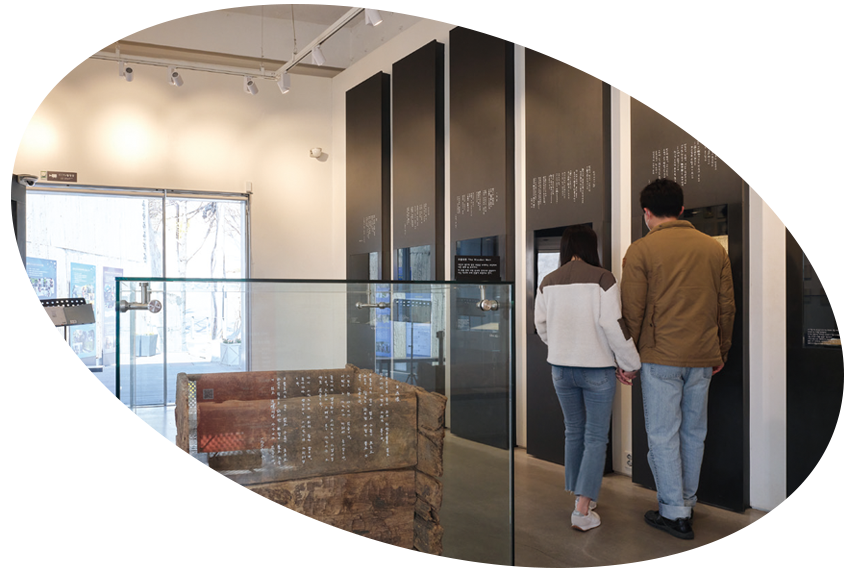
Visitors look around the exhibit hall.
Waterway That Inspires the Soul
The other building that was once used as an office for the pumping station is now an exhibition hall about Yoon’s life. While viewing his personal belongings, visitors can see Yoon as a person rather than just a poet. The museum is proud of its location on “Poet’s Hill.” On Poet’s Hill, there is a monument with Yoon’s most famous poem, “Seosi,” along with a stage where events are held.
The Yoon Dong-ju Literature Museum is not just a static exhibition hall. It is a space where education programs, cultural events, concerts and exhibitions take place. Just like how the old pumping station supplied water to energize Cheongun Apartment residents, the Yoon Dong-ju Literature Museum now energizes lives through the beautiful legacy that Yoon left behind.
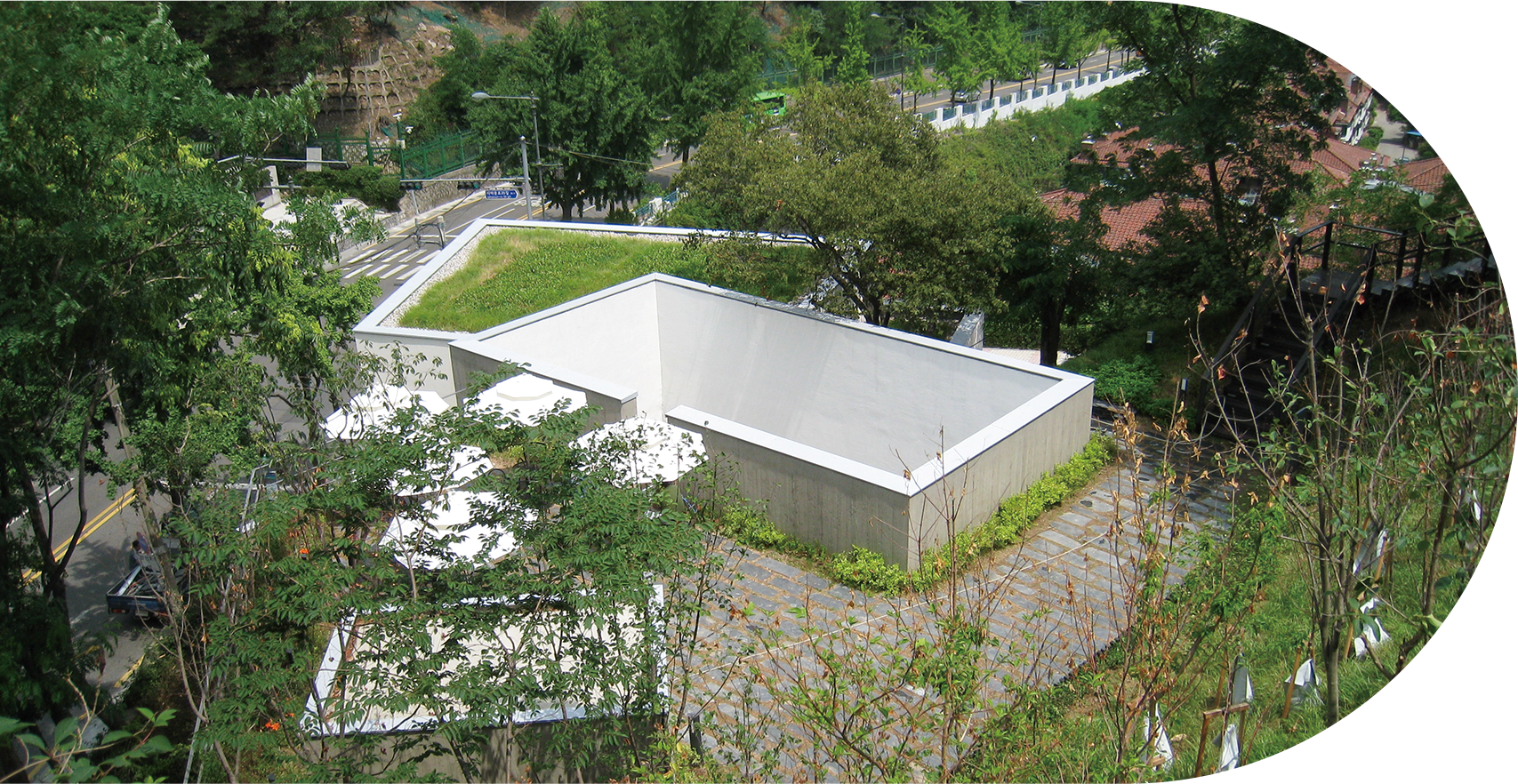
View of the Yoon Dong-ju Literature Museum from Poet’s Hill. © Yoon Dong-ju Literature Museum
Other Articles
-
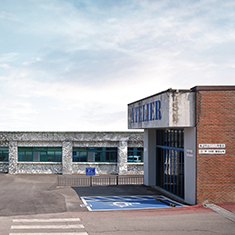
Special Ⅰ Where Creativity Flows
-
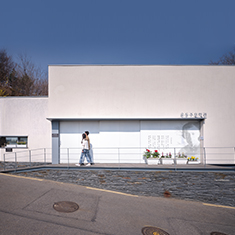
Special Ⅱ A Pumping Station with Spirit
-

Trend All About Drainage Basins
-
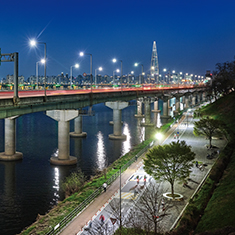
Hidden View City of Lights
-
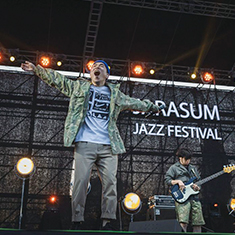
Interview A Bit of Traditional
Musical Futurism -

Art of Detail Fragrant Fashion
-
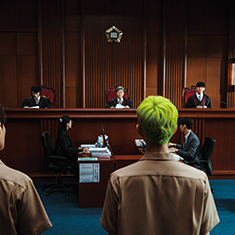
Film & TV When Justice Fails
the Youth -

Collaboration Making the Unfamiliar Familiar
-
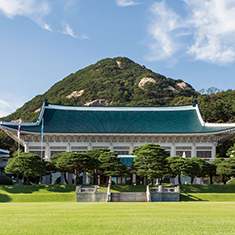
Current Korea Cheong Wa Dae,
Back to The People -

Global Korea Hanbok Appears
in the MV of a Pop Artist


